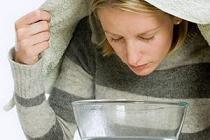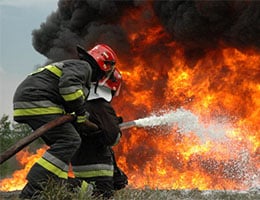VAPORIZATION
Vaporization is the act and consequence of vaporizing . This verb , on the other hand, can refer to transforming a fluid into steam by means of heat or spreading a fluid in drops of reduced size.

Vaporization, therefore, can be the change of state from a liquid to a gas. This process can be carried out in two ways: when the passage from liquid to gaseous takes place throughout the mass of the substance, it is called boiling . It is called boiling point , in this context, the temperature that makes a liquid, at a certain pressure, boil and begin to undergo the aforementioned change of state; If the latter only takes place on the surface of the liquid, the phenomenon is known as evaporation .
The enthalpy of vaporization , on the other hand, is the energy required for a unit mass of a liquid substance, which is at atmospheric pressure and in equilibrium with its vapor, to completely transform into a gas.
For its part, the term enthalpy is defined as a thermodynamic quantity whose variation serves to express a measure of the amount that a thermodynamic system has transferred or absorbed energy; in other words, the energy exchange it maintains with its environment. Enthalpy is symbolized by the H .
There is also the concept of heat of vaporization , which represents the amount of energy required to pass 1 gram of liquid to gas at the boiling point of the given substance. It is a value that must break the attractive intermolecular forces and provide enough energy for the gas to expand.
When we are faced with an ideal gas , after the heat of vaporization, there should be no potential energy associated with these forces. In other words, the internal energy must be molecular kinetics, largely translational , but also rotational and vibrational .
One of the most outstanding points of the vaporization of water is the great alteration that its volume undergoes when it changes phase. Let's see this in an example: if we take one mole of water (18 grams) and convert it into gas, we will obtain a volume of 22.4 liters; If, on the other hand, we took it to 100ºC, instead of 0ºC, and transformed it into steam, its volume would be 30.6 liters.
 If we compare the volume of evaporated water with that in its liquid state, we notice an increase of 1,700 percent , that is, it occupies 1,700 times more than before. This phenomenon is of great importance for fire brigades, for example, since in certain cases it can cause explosions.
If we compare the volume of evaporated water with that in its liquid state, we notice an increase of 1,700 percent , that is, it occupies 1,700 times more than before. This phenomenon is of great importance for fire brigades, for example, since in certain cases it can cause explosions.
When the vapors are used for medicinal purposes , vaporization is also referred to. A person who goes to a hot spring area to breathe the mist is appealing to vaporization.
Let us take the case of a subject who has a cold and who, due to this disorder, has difficulty breathing as he suffers from nasal congestion. In order to free your nostrils, you can heat water in a pot to a boil and inhale the steam . This vaporization will help improve breathing.
This technique can be very beneficial for our health , but also for the care of our physical appearance. Vaporization is used in beauty treatments, to improve the skin of the whole body by cleaning certain external factors and preventing certain infections. When you breathe in water vapor, the respiratory mucosa softens; at the same time, the parts of the skin that come into contact with the steam relax, their pores open and facilitate the elimination of waste.
Comments
Post a Comment